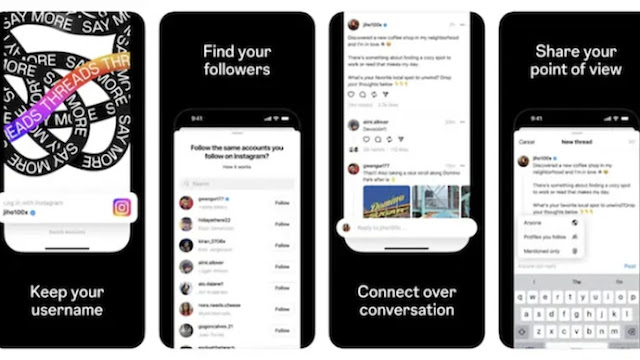Writing a blog post that is SEO-friendly requires careful planning, the creation of high-quality content, and effective optimization techniques. To help you write an effective SEO-friendly blog post, follow these steps:
Writing a blog post that is SEO-friendly requires careful planning, the creation of high-quality content, and effective optimization techniques. To help you write an effective SEO-friendly blog post, follow these steps:
1. Keyword Research: Begin by identifying relevant keywords or phrases related to your blog post topic. Use tools like Google Keyword Planner, SEMrush, or Ahrefs to find popular keywords with good search volume and low competition.
2. Headline and Title Tag: Craft an attention-grabbing headline that includes your target keyword. Ensure that the title tag (HTML title element) of your blog post matches the headline and is optimized for search engines.
3. URL Structure: Create a clean and descriptive URL structure for your blog post. Include your target keyword in the URL while keeping it concise and readable. For example, use "www.yourwebsite.com/seo-friendly-blog-post."
4. Engaging Introduction: Write a compelling introduction that captivates readers and encourages them to continue reading. Naturally incorporate your target keyword within the first few sentences.
5. High-Quality Content: Create valuable, informative, and well-written content that addresses the needs of your target audience. Use subheadings (H2, H3 tags) to structure your content and make it easier to read. Incorporate bullet points, numbered lists, and relevant images to break up the text.
6. Keyword Placement: Sprinkle your target keyword naturally throughout the blog post. Include it in the first paragraph, headings, subheadings, and a few times within the body of the content. Avoid keyword stuffing, as it can harm your SEO efforts.
7. Image Optimization: Optimize your images by compressing their file size to improve page loading speed. Rename image files using descriptive keywords and provide alt text that describes the image, including your target keyword when applicable.
8. Internal and External Links: Include relevant internal links to other pages on your website to enhance navigation and provide additional information to readers. Also, incorporate authoritative external links to reputable sources that add credibility and value to your content.
9. Meta Description: Write a concise and compelling meta description that accurately summarizes your blog post's content. Include your target keyword and make it enticing to encourage click-throughs from search engine results pages.
10. Readability and Formatting: Ensure your content is easy to read and understand. Use short paragraphs, bullet points, and headings to break up the text. Use bold or italics to highlight important points.
11. Mobile-Friendliness: Optimize your blog post for mobile devices, as a significant number of internet users browse the web on smartphones and tablets. Use responsive design and test your blog post's appearance and functionality on various mobile devices.
12. Social Sharing Buttons: Include social sharing buttons to encourage readers to share your blog post on social media platforms, increasing its visibility and reach.
13. Post Length and Frequency: Aim for a blog post length of at least 1,000 words or more, as longer posts tend to perform better in search engine rankings. Additionally, maintain a consistent publishing schedule to demonstrate to search engines that your website is active and regularly updated.
14. Post Promotion: After publishing your blog post, promote it through various channels such as social media, email newsletters, and relevant online communities to drive traffic and increase its visibility.
Remember, SEO is a long-term strategy, and it takes time to see results. Focus on providing valuable content to your audience while optimizing it for search engines. Be patient as your blog post gains visibility and organic traffic over time.
FAQ: Writing an SEO-Friendly Blog Post.
Q: Why is it important to write an SEO-friendly blog post?
A: Writing an SEO-friendly blog post helps improve your website's visibility in search engine results. By incorporating optimization techniques and relevant keywords, you increase the chances of attracting organic traffic and reaching your target audience.
Q: How do I find relevant keywords for my blog post?
A: There are various keyword research tools available, such as Google Keyword Planner, SEMrush, and Ahrefs. These tools provide insights into popular keywords related to your topic, their search volume, and competition levels. Use them to identify keywords that align with your content and have a good balance of search volume and competition.
Q: How can I optimize the headline and title tag for SEO?
A: Craft a catchy headline that includes your target keyword. Ensure that the title tag, which appears in search engine results, matches the headline and contains the keyword. By doing this, you help search engines understand the topic of your blog post and increase its visibility to potential readers.
Q: What should I consider when structuring the URL for my blog post?
A: Create a clean and descriptive URL for your blog post. Include your target keyword in the URL while keeping it concise and readable. This helps search engines and users understand the content of the page from the URL itself.
Q: Is the introduction important for SEO?
A: Yes, the introduction plays a crucial role in engaging readers and providing context for search engines. Incorporate your target keyword naturally within the first few sentences to indicate the topic of your blog post to both readers and search engines.
Q: How should I optimize the content itself?
A: Focus on creating high-quality content that provides value to your readers. Sprinkle your target keyword naturally throughout the blog post, including in headings, subheadings, and the body of the content. However, avoid excessive keyword usage, as it can harm your SEO efforts.
Q: What are some tips for optimizing images in a blog post?
A: Optimize images by compressing their file size to improve page loading speed. Rename image files using descriptive keywords and provide alt text that describes the image, including your target keyword when relevant. This helps search engines understand the image content and improves accessibility.
Q: How important are internal and external links in a blog post?
A: Internal links to other pages on your website help with navigation and provide additional information to readers. Including authoritative external links to reputable sources enhances the credibility and value of your content. Both internal and external links contribute to a well-optimized blog post.
Q: Should I write a meta description for my blog post?
A: Yes, writing a concise and compelling meta description is essential. It appears in search engine results and provides a summary of your blog post's content. Include your target keyword and make the description enticing to encourage users to click and visit your website.
Q: How can I ensure my blog post is mobile-friendly?
A: Optimize your blog post for mobile devices by using a responsive design. Test your blog post's appearance and functionality on various mobile devices to ensure it is accessible and displays correctly.
Q: Is there an optimal length for a blog post?
A: Longer blog posts tend to perform better in search engine rankings, so aim for a length of at least 1,000 words or more. However, focus on providing valuable content rather than simply aiming for a specific word count.
Q: What can I do to promote my blog post after publishing it?
A: Promote your blog post through various channels, including social media, email newsletters, and relevant online communities. By sharing your content and encouraging engagement, you





Comments
Post a Comment